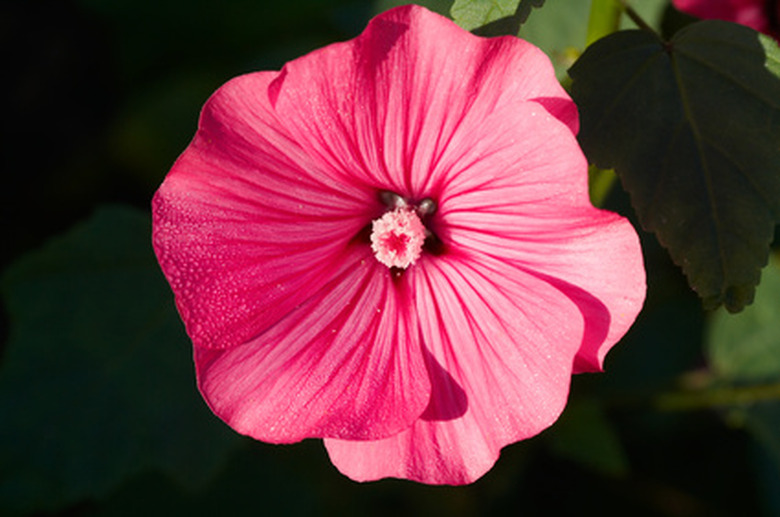How To Take Care Of Lavatera Mallow Plants
There is a mallow plant available for nearly every garden design. Mallows come in both annual and perennial varieties and they all produce flowers in a variety of forms. There are edible mallows, such as okra, and exotic mallows like the Chinese lantern plant. The Lavatera mallows are grown primarily for their colorful blooms. Most are short-lived perennials, lasting about five years before requiring replacement. Proper care allows the Lavatera to live and bloom healthily for as long as possible.
Step 1
Plant mallow in areas that receive the amount of sunlight required by the specific variety while also providing proper soil conditions. Grow Lavatera in full-sun areas with well-drained soils.
- There is a mallow plant available for nearly every garden design.
- There are edible mallows, such as okra, and exotic mallows like the Chinese lantern plant.
Step 2
Water Lavatera mallow once a week as needed when it is actively growing from spring until fall. Moisten the soil around it to a 6-inch depth. Established mallows only need additional irrigation when there is less than 1 inch of natural precipitation in a week.
Step 3
Spread a 2-inch layer of mulch around Lavatera mallow each spring. Mulch preserves soil moisture and helps prevent weed growth. Use organic mulches, such as pine bark or straw.
Step 4
Spread a 2- to 4-inch layer of compost around perennial mallow varieties in fall or apply the compost in spring for newly planted annual mallows. Compost breaks down and leaches nutrients into the soil for the mallow plants.
- Water Lavatera mallow once a week as needed when it is actively growing from spring until fall.
- Spread a 2- to 4-inch layer of compost around perennial mallow varieties in fall or apply the compost in spring for newly planted annual mallows.
Step 5
Deadhead Lavatera mallow regularly during the flowering season. Cut off the flower heads as soon as the petals begin to wilt to prevent seed set and encourage further blooming.
Lavatera Care
Tree mallow needs full sun except in areas with hot summers where it will appreciate some afternoon shade. Tree mallow prefers cool summers. High-nitrogen fertilizers encourage an abundance of foliage but reduce the number of flowers. Lawn fertilizers are high in nitrogen and shouldn't be used near tree mallow. It's best to install the stake at planting time so that you don't disturb the plant roots later. Plants started indoors are more likely to need staking than those started outdoors. Remove spent flowers regularly to keep the plant blooming. These should be removed as well. If the plant stops blooming in late summer, cut it back by one-third of its height to encourage a fresh flush of flowers. The roots don't tolerate transplanting well, but you can get a head start by starting the seeds in peat or fiber pots six to eight weeks before the first frost. The plants self-seed if the seedpods aren't removed.
- Deadhead Lavatera mallow regularly during the flowering season.
- Tree mallow needs full sun except in areas with hot summers where it will appreciate some afternoon shade.
Things Needed
- Mulch
- Compost
Warning
Some mallow varieties are considered invasive. While Lavatera is usually considered safe, always verify the status of the plant with your county extension before adding it to your landscape.
Tip
Harvest the Lavatera seed in late summer instead of deadheading if you want to grow more plants next year.
References
- University of California Extension: Lavatera maritima
- Complete Guide to Flower Gardening; Susan A. Roth
- Annual Flowers; Barbara Pleasant
- A-Z of Annuals, Biennials and Bulbs; Fiona Gilsenan
- Annuals For Every Purpose; Larry Hodgson
